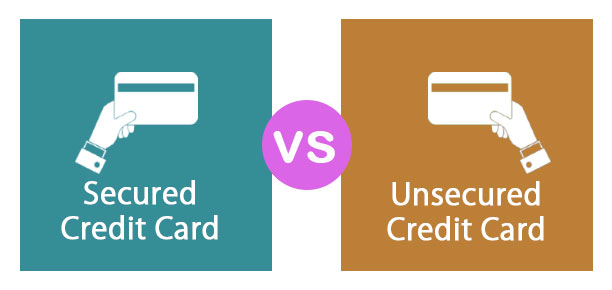Guide to Secured and Unsecured Credit Cards for Bad Credit

When it comes to credit cards, individuals with bad credit often struggle to get approved for traditional credit cards. However, there are secured and unsecured credit cards that can help individuals with bad credit to rebuild their credit scores. In this article, we will explore the differences between secured and unsecured credit cards and the benefits they offer to those with bad credit.
What are Secured Credit Cards?
Secured credit cards require the cardholder to provide collateral in the form of a deposit. This deposit acts as a security for the credit card issuer, and the credit limit is often equal to the amount of the deposit. If the cardholder defaults on their payments, the issuer can use the deposit to cover the outstanding balance. Secured credit cards are often easier to obtain than traditional credit cards since they are low-risk for the issuer.
Benefits of Secured Credit Cards
One of the primary benefits of secured credit cards is that they can help individuals with bad credit to rebuild their credit score. Since secured credit cards require collateral, the credit card issuer is willing to take on higher-risk borrowers. By using a secured credit card responsibly and making payments on time, individuals with bad credit can gradually improve their credit score.
Secured credit cards also offer other benefits, such as lower interest rates and fees than traditional credit cards. This is because the credit card issuer has collateral to fall back on if the cardholder defaults on their payments. Additionally, some secured credit cards offer rewards programs, which can help cardholders to earn cashback or points for purchases made with the card.
What are Unsecured Credit Cards?
Unsecured credit cards do not require collateral, and the credit limit is based on the cardholder’s creditworthiness. Individuals with bad credit may find it more challenging to get approved for unsecured credit cards since they are high-risk for the issuer. However, some credit card issuers specialize in offering unsecured credit cards to individuals with bad credit.
Benefits of Unsecured Credit Cards
One of the primary benefits of unsecured credit cards is that they do not require collateral. This means that individuals do not need to put down a deposit to get approved for the card. Unsecured credit cards can also offer higher credit limits than secured credit cards since they are based on the cardholder’s creditworthiness.
Unsecured credit cards for bad credit can also help individuals to rebuild their credit scores. By using the card responsibly and making payments on time, individuals with bad credit can gradually improve their credit scores. Additionally, some unsecured credit cards offer rewards programs, which can help cardholders to earn cashback or points for purchases made with the card.
Which Type of Credit Card is Right for You?
The type of credit card that is right for you depends on your individual financial situation. If you have bad credit, a secured credit card may be a good option since it is easier to get approved for and can help you rebuild your credit score. However, if you have good credit, an unsecured credit card may be a better option since it can offer higher credit limits and more rewards.
When choosing a credit card, it is essential to read the terms and conditions carefully. Look for fees, interest rates, and other charges that may apply to the card. Additionally, check if the card offers a rewards program and if there are any restrictions on the rewards.
Conclusion
In conclusion, secured and unsecured credit cards can help individuals with bad credit to rebuild their credit scores. Secured credit cards require collateral and are often easier to get approved for, while unsecured credit cards do not require collateral but may be more challenging to get approved for. Both types of credit cards offer benefits, such as lower interest rates, rewards programs, and higher credit limits.
When choosing a credit card, it is essential to read the terms and conditions carefully. Look for fees, interest rates, and other charges that may apply to the card. Additionally, check if the card offers a rewards program and if there are any restrictions on the rewards. Make sure that you can comfortably afford to make the minimum payments on the card and that you understand the consequences of missing payments or defaulting on the card. By choosing the right credit card and using it responsibly, individuals with bad credit can gradually rebuild their credit score and improve their financial situation.